Tamago Sando is an immensely popular sandwich in Japan, known for its rich egg flavor and creamy texture. You will surely be captivated by the taste of this beloved sandwich.
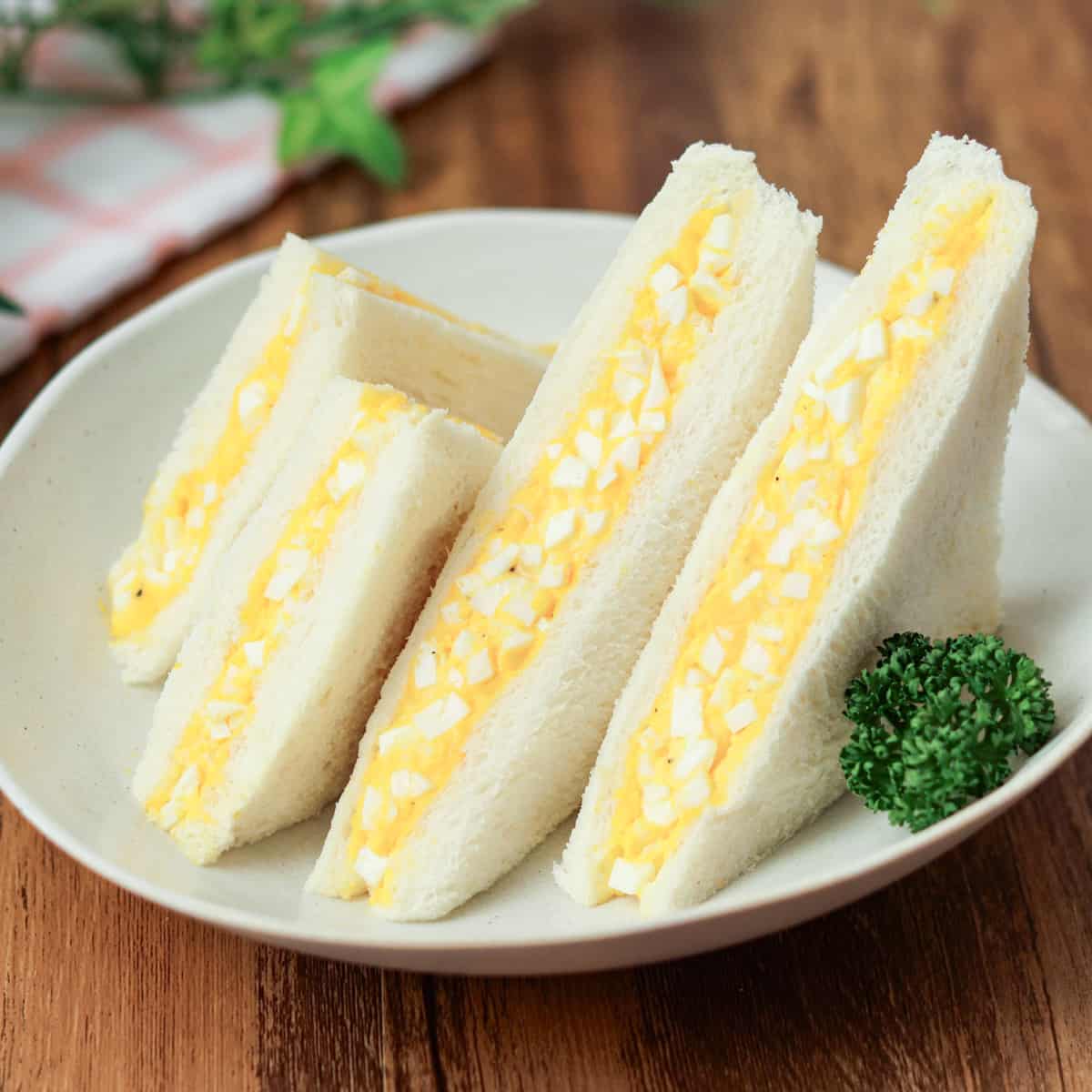
Jump to:
What is Tamago Sando?
Tamago Sando is a Japanese sandwich made primarily with mashed boiled eggs mixed with Japanese mayonnaise. "Tamago" means egg, and "Sando" is a shortened term for "sandwich" in Japanese. It is typically made with soft, fluffy white milk bread known as shokupan, which enhances the enjoyment of the filling's flavors.
The combination of boiled eggs and Japanese mayonnaise creates a richness and depth of flavor that is hard to imagine from the individual ingredients alone. Its popularity extends beyond Japan, having gained recognition and appreciation worldwide.
Since the flavor of this sandwich depends heavily on the quality of its ingredients, using high-quality eggs is highly recommended for the best results.
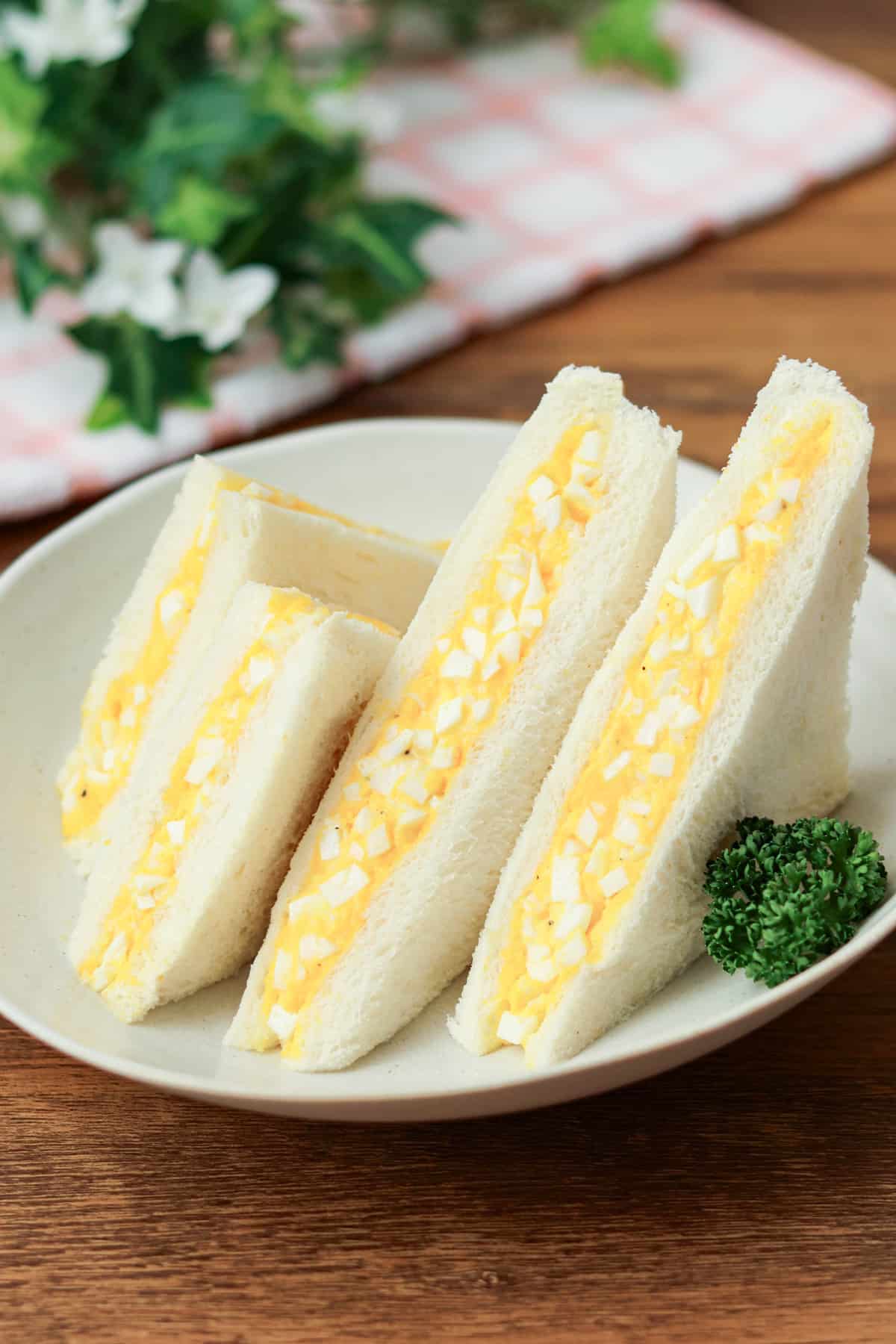
Exploring shokupan
Shokupan, the bread used for making this sandwich, is one of the most common types of bread in Japan.
When eaten on its own, it has a soft, fluffy, marshmallow-like texture, and its mild flavor and delicate consistency don't overpower the filling. For this reason, it has become a staple choice for Japanese sandwiches.
A standard loaf is 4.92 inches (12.5 cm) square, and pre-sliced loaves are available in packs containing 4, 5, 6, 8, 10, or 12 slices. Among these, loaves with 8 slices or more are considered best for sandwiches. The thickness varies depending on the number of slices:
- 4 slices: 1.23 inches (3.1 cm)
- 5 slices: 1 inch (2.5 cm)
- 6 slices: ⅘ inch (2 cm)
- 8 slices (for sandwiches): ⅗ inch (1.5 cm)
- 10 slices (for sandwiches): ½ inch (1.2 cm)
- 12 slices (for sandwiches): ⅖ inch (1 cm)
For an authentic texture, you should use shokupan sliced to the appropriate thickness, or slice 4-6 thicker pieces in half horizontally. If using an unsliced loaf, cut it to a thickness of approximately ⅖-⅗ inches (1-1.5 cm). Alternatively, if you don't mind the thickness, you can also use 4-6 slices as they are.
How to create the perfect texture
With just a little extra effort, you can give this Japanese sandwich a smoother, more enjoyable texture. The key to achieving delicious results is to prepare the boiled eggs by separating the yolks from the whites.
The yolks contribute to flavor and smoothness, while the whites add a pleasant textural contrast. Mix the yolks thoroughly with the seasonings for a few minutes until creamy. As for the whites, finely chop them into pieces about ⅕ inch (5-6 mm) in size.
By combining them again, you can maintain a smooth consistency while preserving the texture of the whites in perfect balance. The difference in mouthfeel compared to preparing them without separation is significant, so I encourage you to give it a try.
Filling options
Tamago sando is typically made with only boiled eggs as the filling, but you can also add other ingredients based on your preference. In Japan, the following are sometimes included along with eggs:
- Ham slices
- Lettuce
- Sliced cheese
- Teriyaki chicken
While this recipe doesn't include any additional ingredients, if you are making a large batch of tamago sando at once, it is highly recommended to add some to enjoy a variety of flavors.
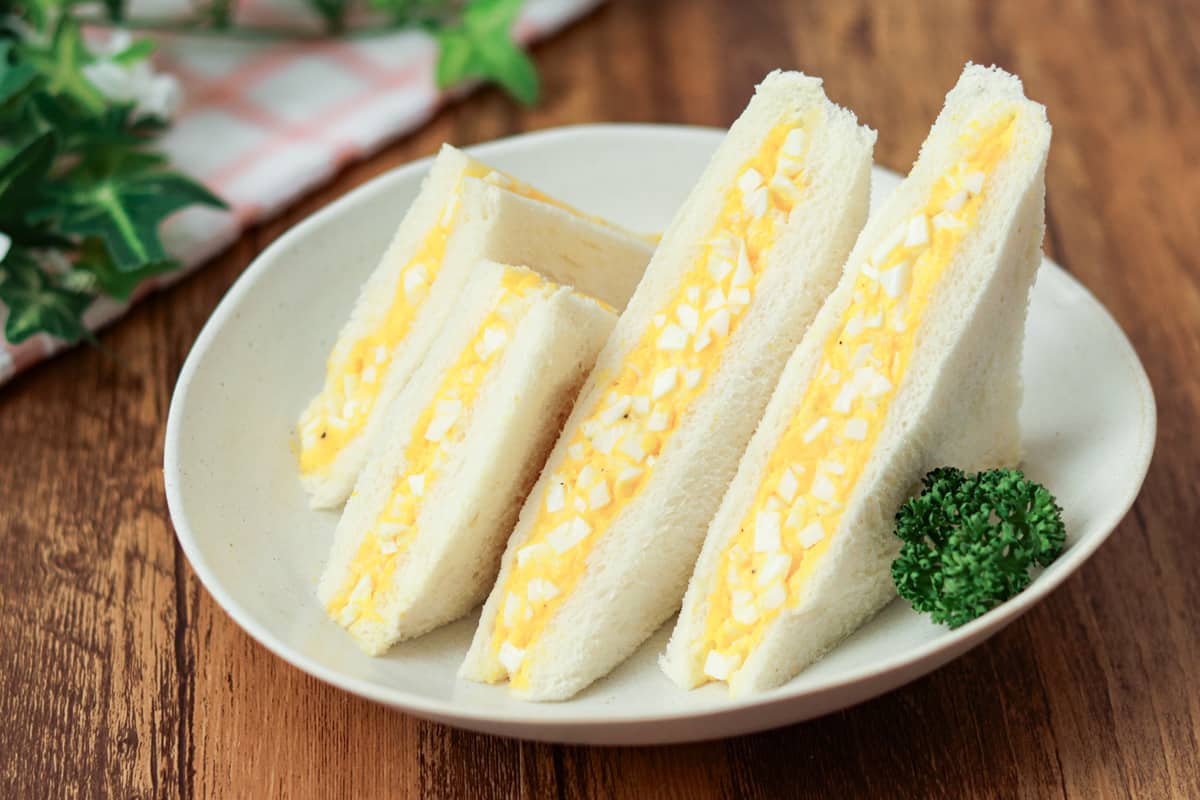
📋Step-by-step recipe
Ingredients
- 3 large eggs (about 2.1 oz/60 g each, including shell)
- 4 slices shokupan (Use shokupan loaves cut into 8, 10, or 12 slices. If using loaves sliced into 4, 5, or 6 thicker pieces, cut each slice in half horizontally beforehand. If using an unsliced loaf, slice it to a thickness of approximately ⅖-⅗ inches (1-1.5 cm).)
- 2 tsp butter (0.17 oz/5 g per 1 tsp, for the shokupan)
Seasonings:
- ½ tsp sugar
- ⅙ tsp salt
- ⅙ tsp ground black pepper
- 2 Tbsp Japanese mayonnaise (such as Kewpie Mayo; 0.53 oz/15 g per 1 Tbsp. For a homemade version, please refer to the linked article.)
Instructions
🕒 Total: 25 mins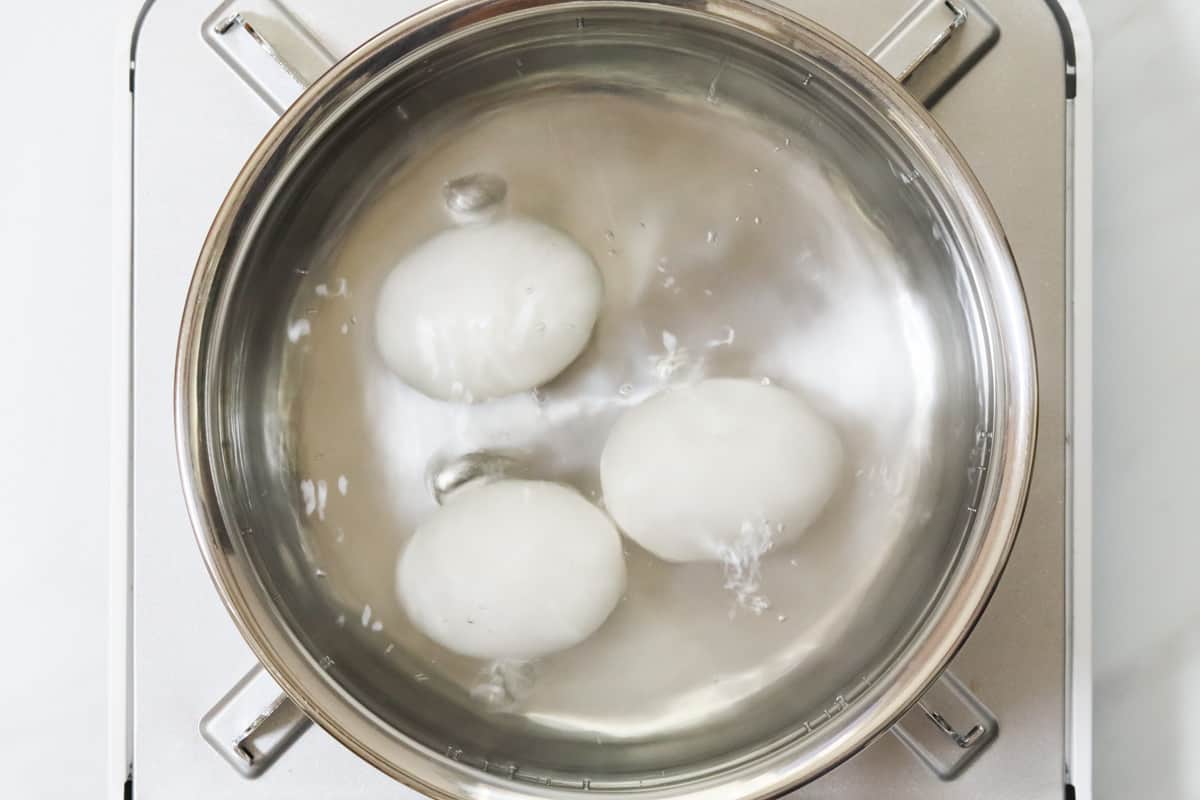
Step 1
Fill a large pot with plenty of water and bring it to a boil. Once boiling, reduce the heat to medium and carefully lower eggs into the water using a slotted spoon or ladle. Let them cook for at least 12 minutes.
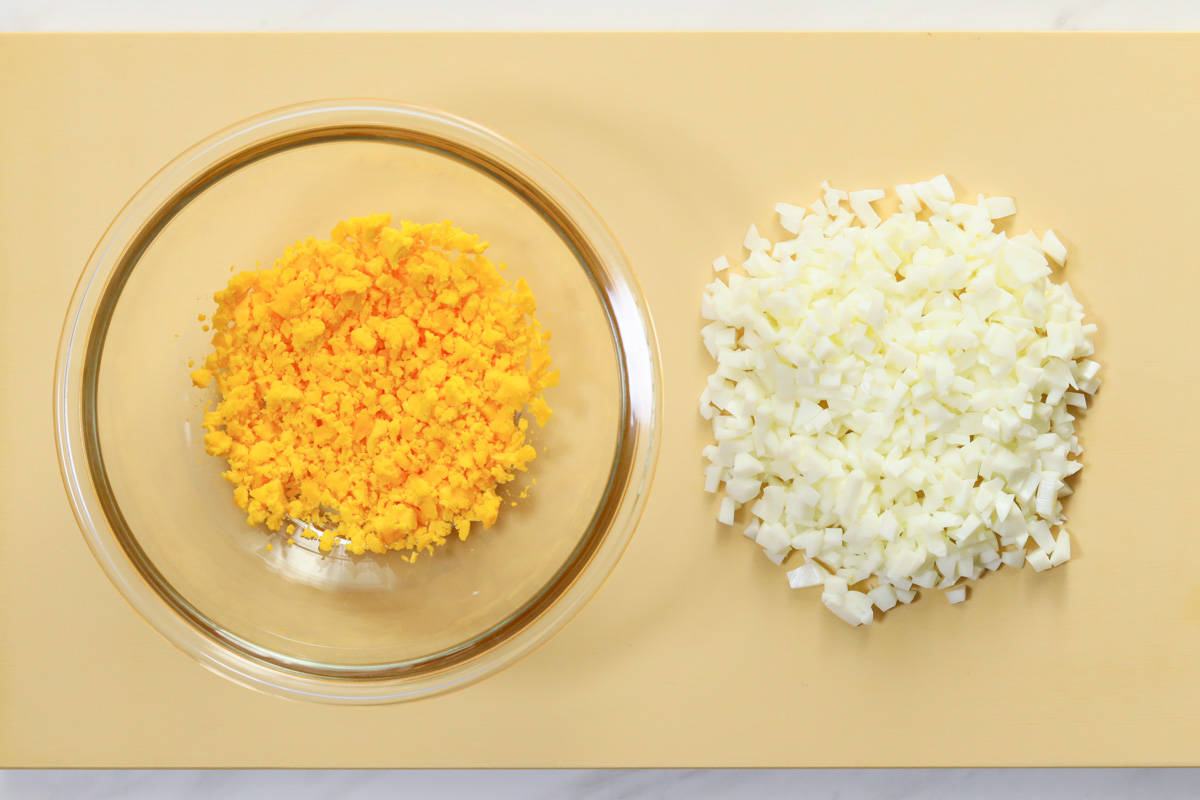
Step 2
Remove the eggs from the pot and cool them under running water. Peel and cut them in half to separate the yolks and whites. Mash the yolks in a bowl using a spoon or spatula, and dice the whites into small pieces about ⅕ inch (5-6 mm) in size.
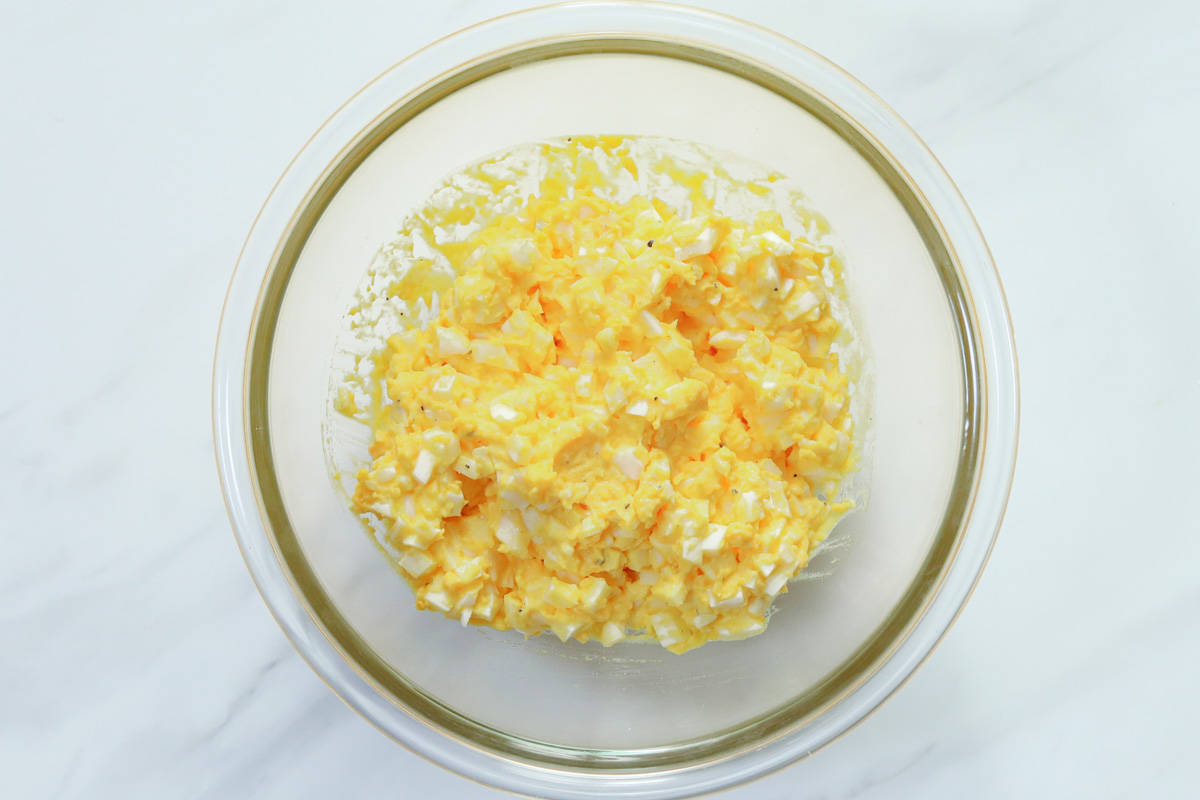
Step 3
Add the seasonings (sugar, salt, pepper, and Japanese mayonnaise) to the bowl, and thoroughly mix until the mixture reaches a creamy consistency, which should take a few minutes. Then, add the chopped whites and mix everything together.
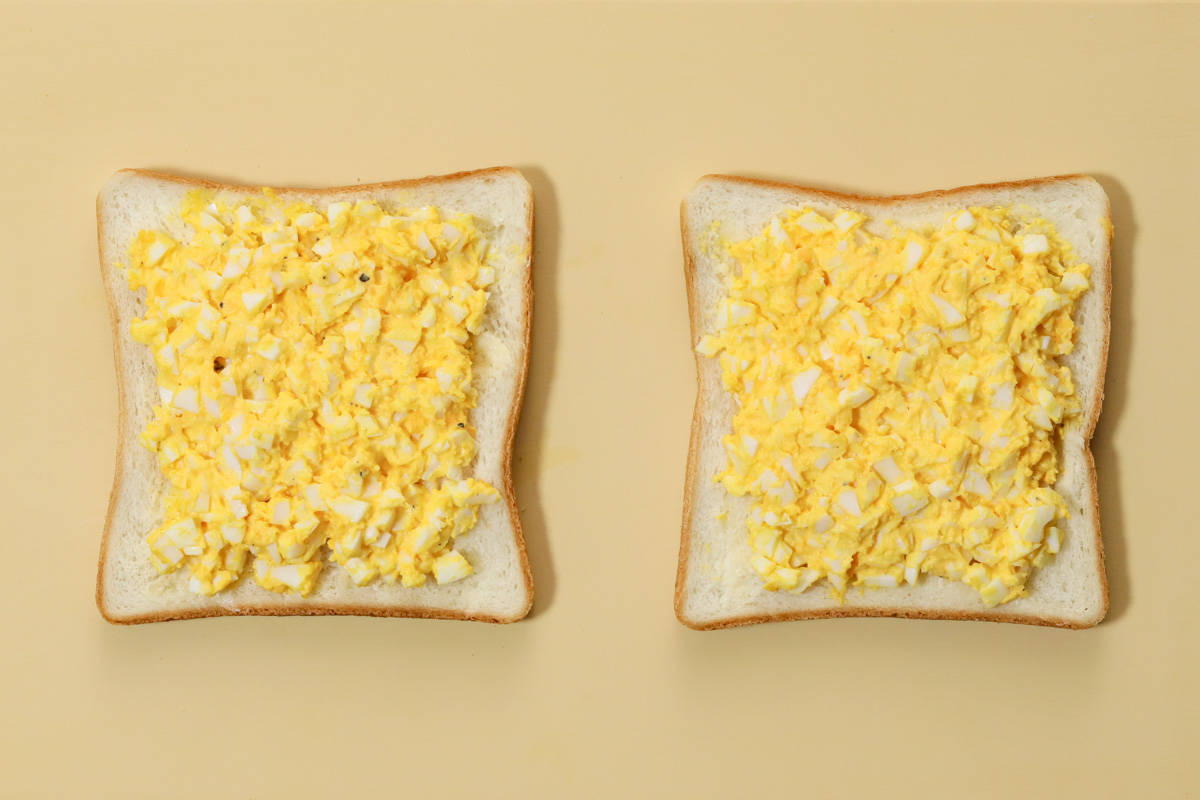
Step 4
Spread butter on one side of each slice of shokupan. Evenly spread the egg mixture on the buttered side of one slice, then top it with another slice of shokupan, buttered side facing down. Repeat this process to make the desired number of tamago sando.
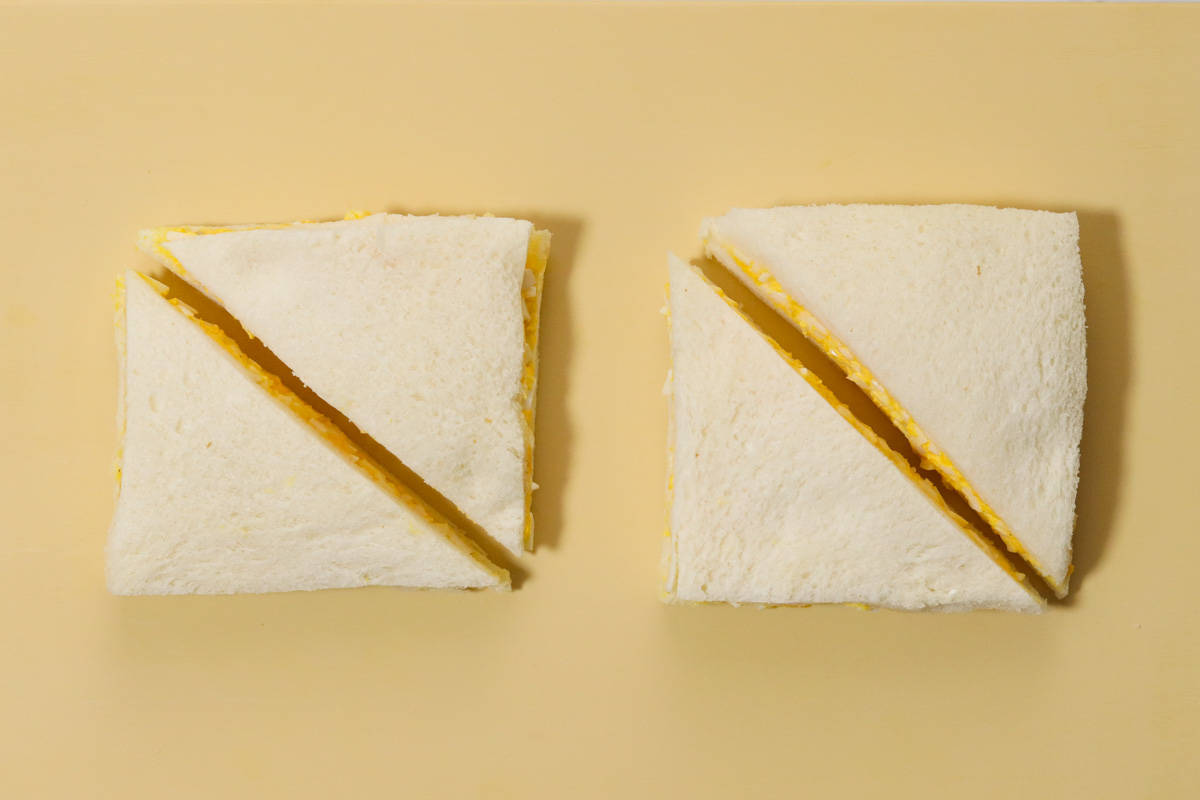
Step 5
Cut off the crusts and slice the sandwiches diagonally or horizontally. For cleaner cuts, it is best to wipe the knife with a paper towel between cuts.
To store
You can store it in the refrigerator for up to a day.
Transforming leftover shokupan crusts
While the leftover shokupan crusts can be enjoyed on their own, you can also turn them into a sweet treat. After trying this tamago sando recipe, be sure to try the Sweet Shokupan Crust Snacks recipe as well.
Another version of Tamago Sando
In Japan, tamago sando often refers to a dish like this recipe, but there is also another type of sandwich with the same name. This version features a large piece of tamagoyaki (Japanese rolled omelet) or dashimaki tamago (Japanese rolled omelet with dashi stock) as the filling.
While both types use eggs, their flavors are quite distinct. These sandwiches are also popular in Japan, so feel free to give them a try if you are curious.
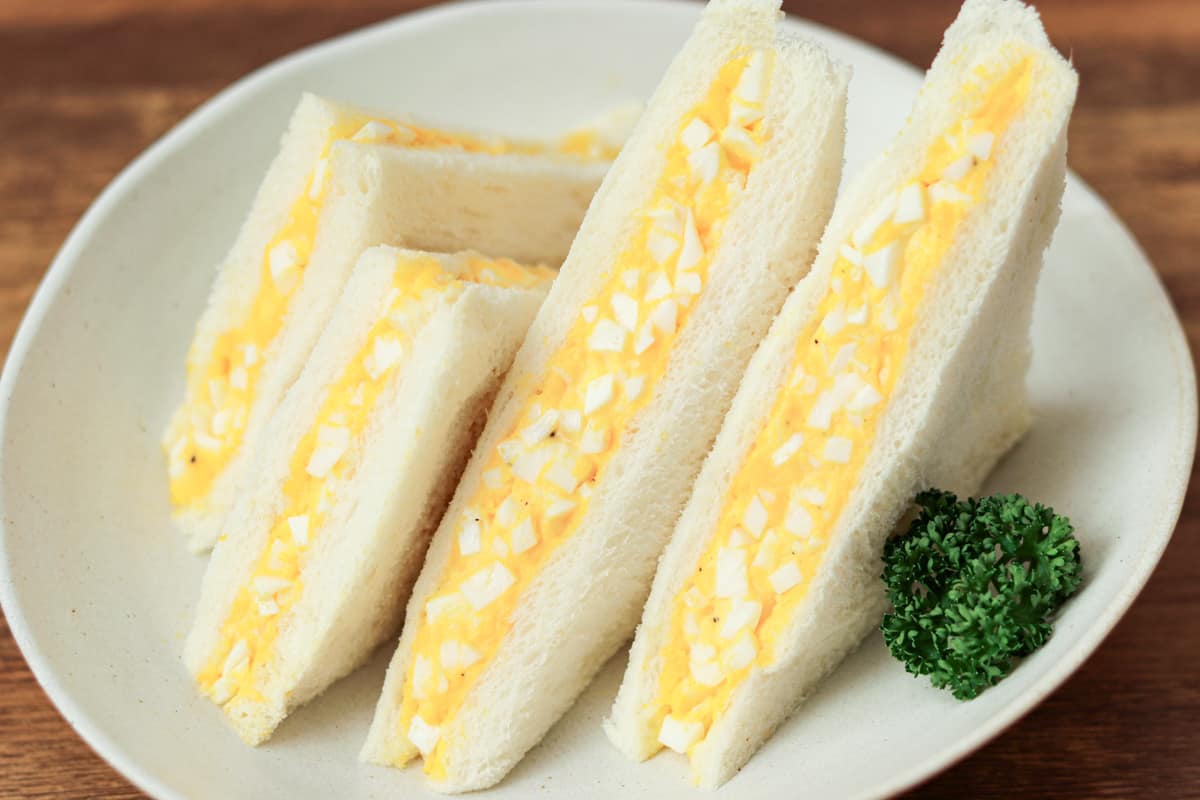
If you try this recipe, I’d love to hear what you think. Please consider leaving a review and star rating in the comments below. If you enjoyed it, I’d really appreciate it if you shared it with your friends.
More egg recipes you'll love
FAQ
Yes, you can. The texture will be different, but you could try using a hot dog bun.
Recipe card

Tamago Sando (Japanese Egg Sandwich)
Ingredients
- 3 large eggs (about 2.1 oz/60 g each, including shell)
- 4 slices shokupan (Use shokupan loaves cut into 8, 10, or 12 slices. If using loaves sliced into 4, 5, or 6 thicker pieces, cut each slice in half horizontally beforehand. If using an unsliced loaf, slice it to a thickness of approximately ⅖-⅗ inches (1-1.5 cm).)
- 2 tsp butter (0.17 oz/5 g per 1 tsp, for the shokupan)
Seasonings:
- ½ tsp sugar
- ⅙ tsp salt
- ⅙ tsp ground black pepper
- 2 Tbsp Japanese mayonnaise (such as Kewpie Mayo; 0.53 oz/15 g per 1 Tbsp. For a homemade version, please refer to the linked article.)
Instructions
- Fill a large pot with plenty of water and bring it to a boil. Once boiling, reduce the heat to medium and carefully lower eggs into the water using a slotted spoon or ladle. Let them cook for at least 12 minutes.
- Remove the eggs from the pot and cool them under running water. Peel and cut them in half to separate the yolks and whites. Mash the yolks in a bowl using a spoon or spatula, and dice the whites into small pieces about ⅕ inch (5-6 mm) in size.
- Add the seasonings (sugar, salt, pepper, and Japanese mayonnaise) to the bowl, and thoroughly mix until the mixture reaches a creamy consistency, which should take a few minutes. Then, add the chopped whites and mix everything together.
- Spread butter on one side of each slice of shokupan. Evenly spread the egg mixture on the buttered side of one slice, then top it with another slice of shokupan, buttered side facing down. Repeat this process to make the desired number of tamago sando.
- Cut off the crusts and slice the sandwiches diagonally or horizontally. For cleaner cuts, it is best to wipe the knife with a paper towel between cuts.
Notes
- You can store it in the refrigerator for up to a day.
- While the leftover shokupan crusts can be enjoyed on their own, you can also turn them into a sweet treat. After trying this tamago sando recipe, be sure to try the "Sweet Shokupan Crust Snacks" recipe as well.

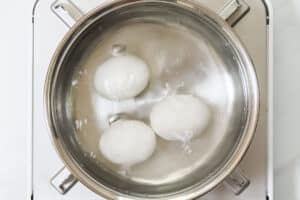
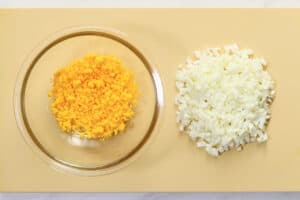
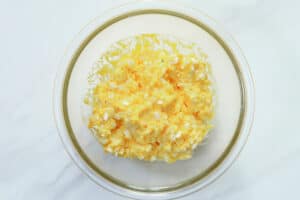

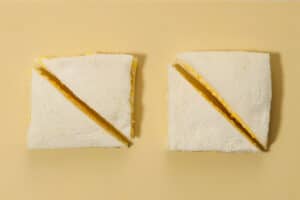
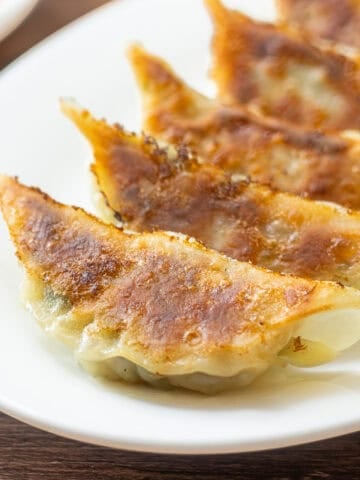
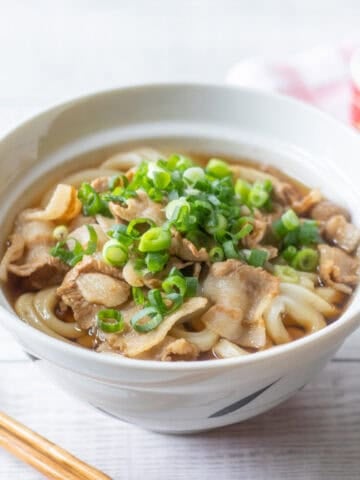
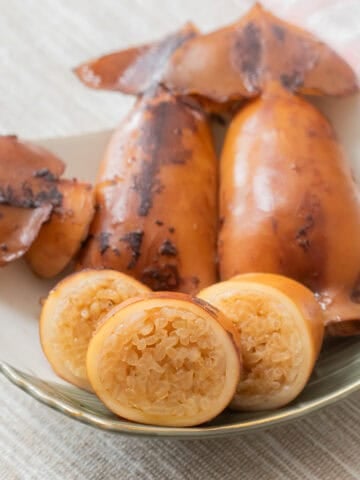

Leave a Rating and a Comment